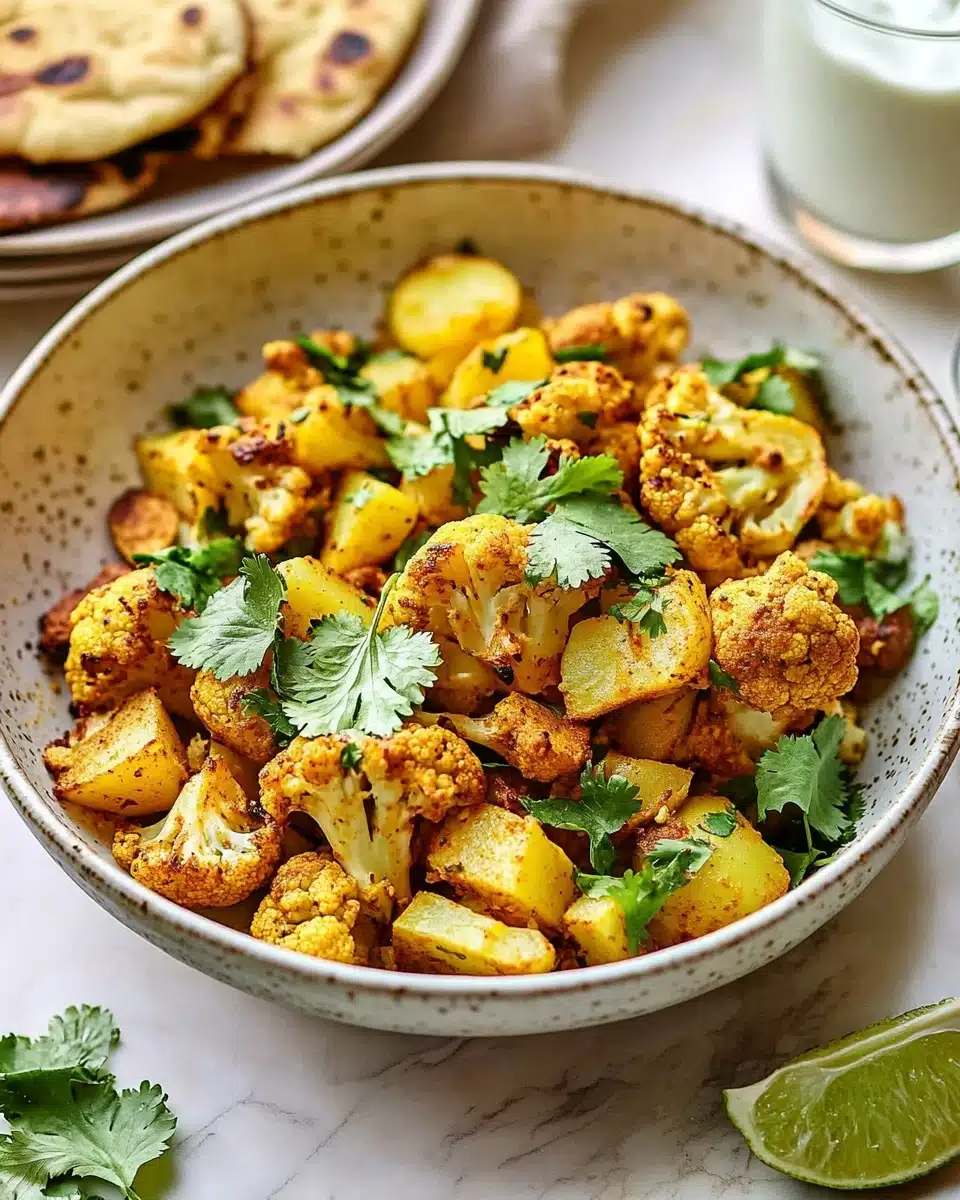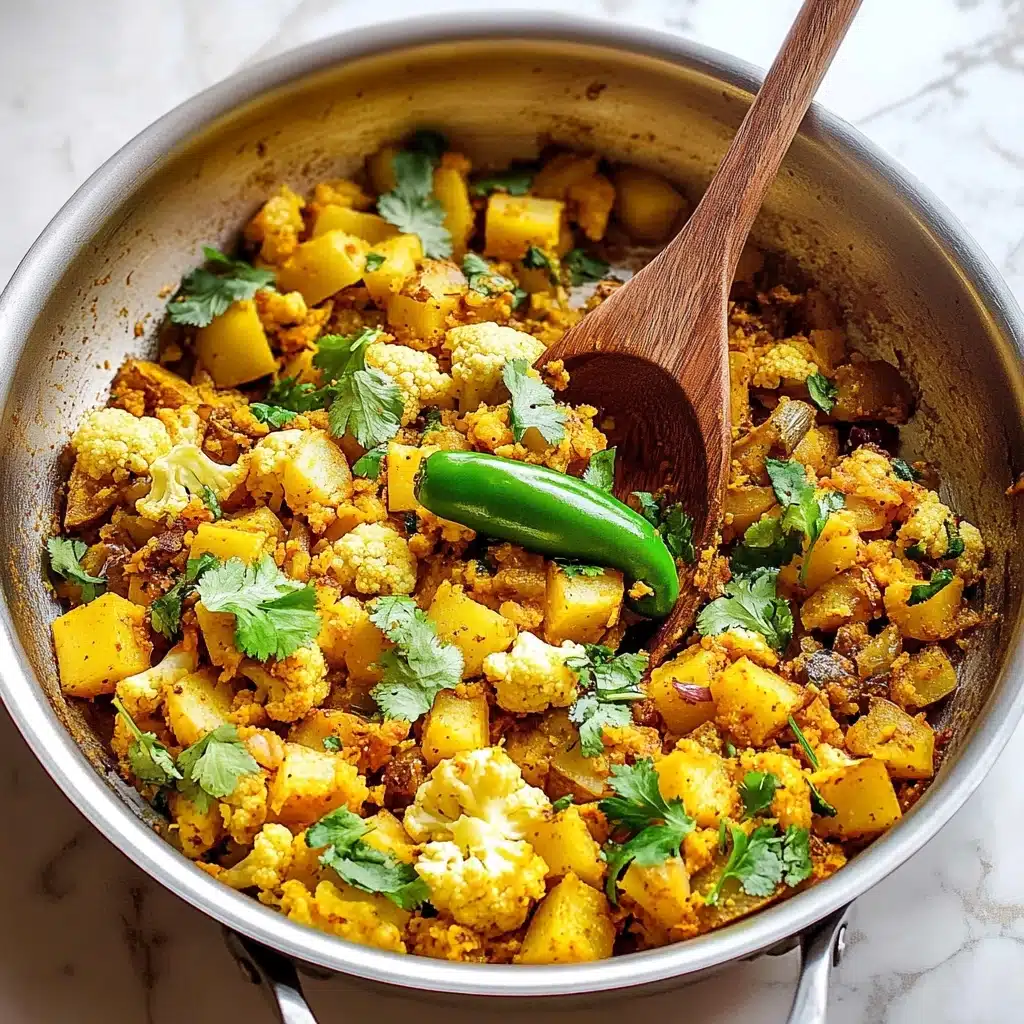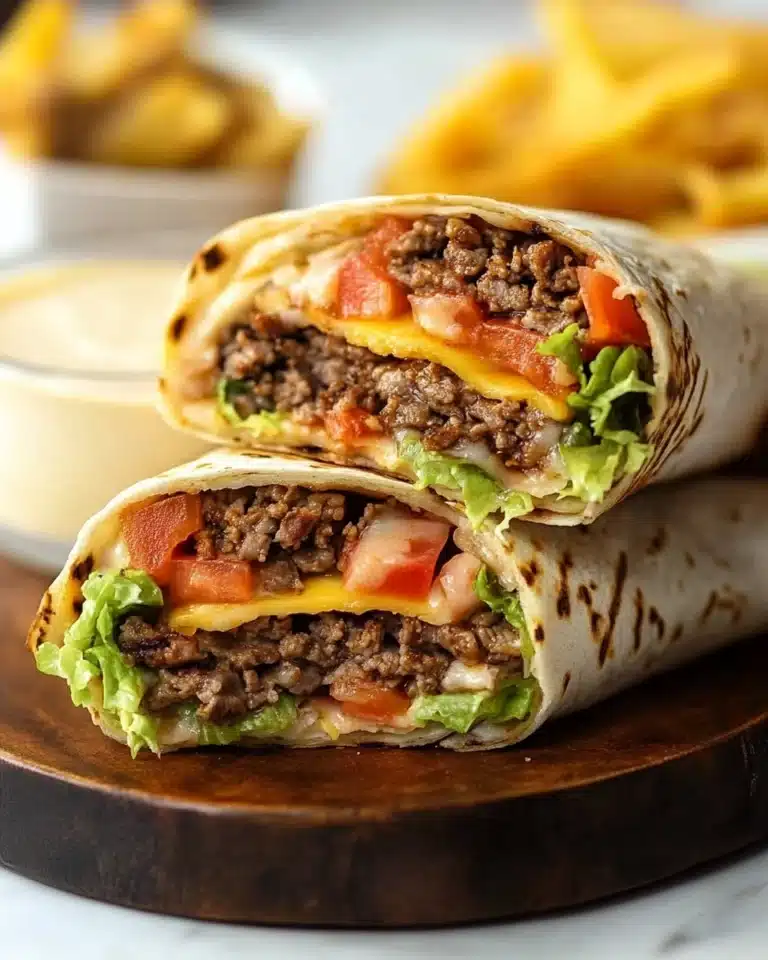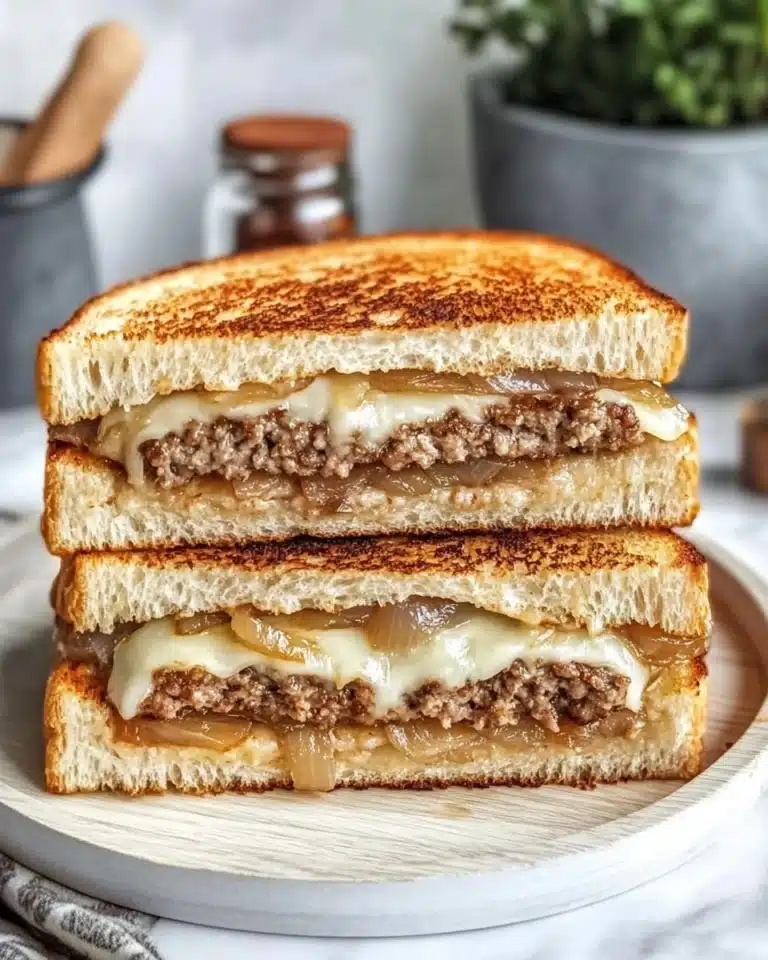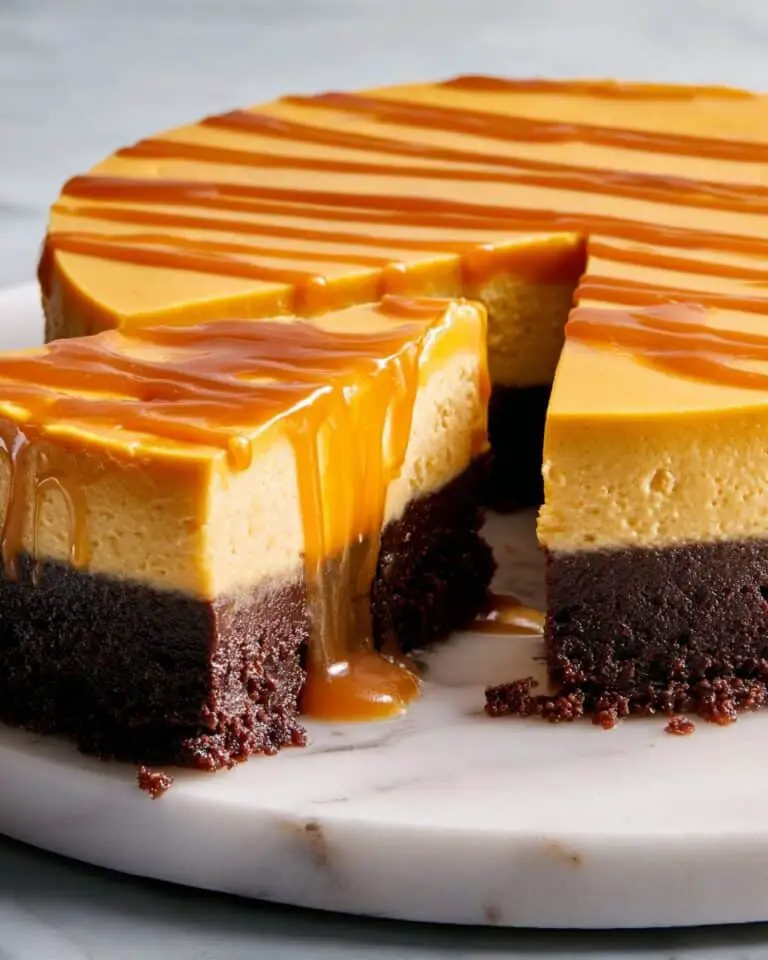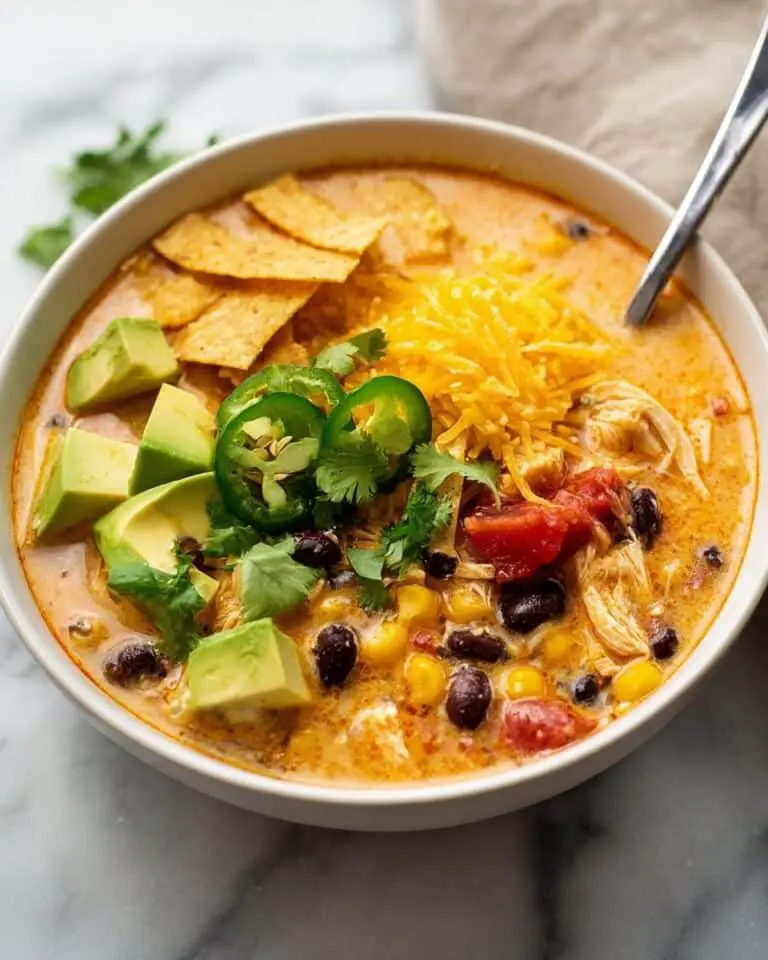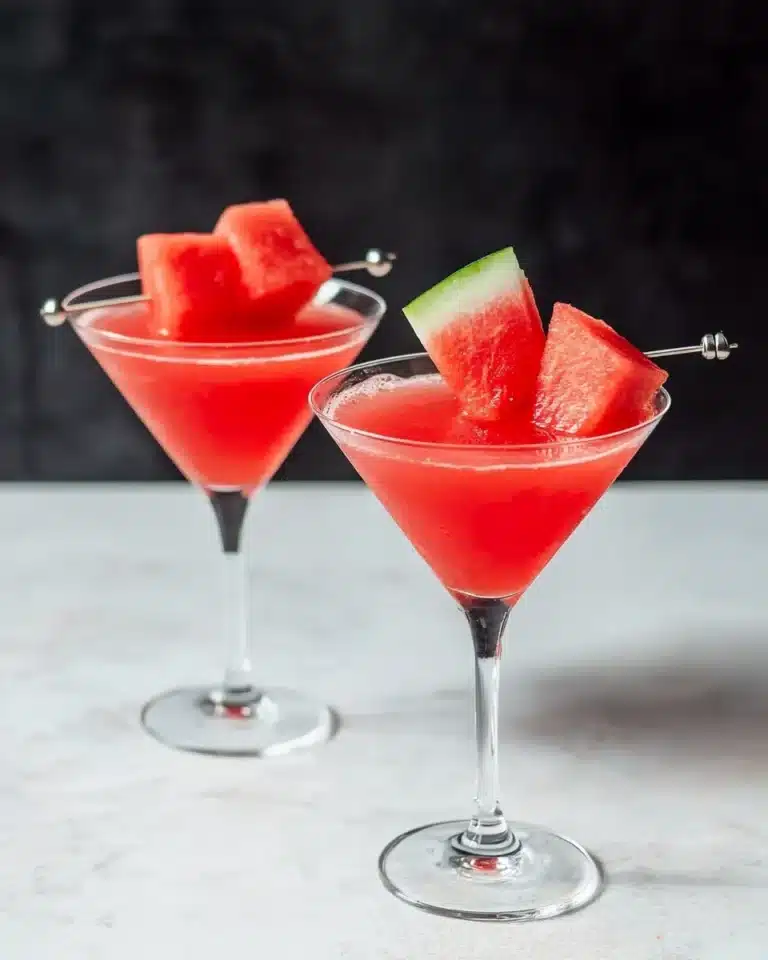Meet your new favorite Indian comfort food: Aloo Gobi. This cozy potato and cauliflower curry is an explosion of flavor, color, and aroma, all brought together with a blend of warming spices. Each bite is golden, tender, and absolutely irresistible—it’s the kind of dish you’ll crave again and again, whether you’re new to Indian cuisine or already a devoted fan.
Why You’ll Love This Recipe
- Big, Bold Flavors: Fragrant whole spices like cumin and cinnamon mingle with toasty turmeric, yielding layers of complex, cozy flavor in every forkful.
- Delightful Textures: Roasting the potatoes and cauliflower first, instead of boiling, ensures crisp edges and creamy centers for a satisfying bite.
- Totally Versatile: Aloo Gobi is naturally vegan and gluten-free, and it’s easy to adapt with your favorite add-ins or spices.
- Weeknight Fast (with Fancy Results): From prep to plate in under an hour, this hearty dish feels special enough for guests but is totally achievable on a busy night.
Ingredients You’ll Need
You only need a handful of pantry staples and fresh produce for terrific Aloo Gobi. Each ingredient is thoughtfully chosen to bring maximum flavor, color, and perfect tenderness—no fuss, just pure deliciousness.
- Yukon Gold Potatoes: These hold their shape beautifully and get creamy and golden when roasted; no peeling required for extra texture and nutrition.
- Cauliflower Florets: The star partner to potatoes, cauliflower caramelizes in the oven, giving nutty notes to the dish.
- Neutral-Flavored Oil: Oil helps with roasting and blooming spices. Use what you like—olive oil works in a pinch.
- Cumin Seeds & Cinnamon Stick: Toasted at the start, they form the backbone of Aloo Gobi’s irresistible aroma.
- Yellow Onion: Adds rich sweetness as it browns, forming a deep base for the masala sauce.
- Garlic & Ginger: Freshly chopped, these aromatics zing up the masala and bring warmth to every bite.
- Turmeric & Coriander Powder: For golden color and gentle earthiness—essential for that authentic flavor.
- Asafoetida (Hing): Optional but highly recommended for that classic Indian essence; skip if you’re gluten-free.
- Amchur Powder: Dried mango powder for subtle tang; if you can’t find it, lemon or lime juice steps in at the end.
- Kashmiri Chili Powder: Adds gentle heat and a gorgeous red hue without overpowering the dish.
- Serrano Pepper: Slit for just the right amount of gentle heat; tailor the spice to your preference.
- Roma Tomatoes: Lend a touch of acidity and sweetness; as they cook down, they create a velvety sauce.
- Kasuri Methi (Fenugreek Leaves): Optional but magical for a finishing touch of fragrance at the end.
- Garam Masala: A hint of this spice blend brings the whole dish together right before serving.
- Vegan Butter: For a glossy finish and extra richness—optional, but highly encouraged!
- Fresh Cilantro & Lime Juice: The final sparkle! These fresh toppings cut through the richness and make the flavors pop.
Variations
The magic of Aloo Gobi is how simple it is to adapt and make your own! You can easily swap ingredients or adjust the spices depending on your pantry, preferences, or what’s fresh at your market today.
- Add Peas: Toss in a handful of frozen green peas near the end of cooking for color and a touch of sweetness.
- Make it Spicier: Use a hotter chili or add more chili powder if you love your Aloo Gobi with a real fiery kick.
- Low-Fat Version: Skip the vegan butter and use a spritz more lemon at the finish for a lighter—but still vibrant—flavor.
- Protein Boost: Stir in cooked chickpeas for extra heartiness and a plant-based protein addition.
How to Make Aloo Gobi
Step 1: Roast the Potatoes & Cauliflower
Start by preheating your oven to 425ºF. Cube the scrubbed Yukon gold potatoes and break the cauliflower into evenly sized florets. Arrange the potatoes on a parchment-lined baking tray with a drizzle of oil, salt, and pepper. On a separate tray, massage oil into the cauliflower, sprinkle with salt and pepper, and roast both in the oven—potatoes on the bottom rack, cauliflower on top. This technique gives you caramelized, hold-their-shape veggies that are a thousand times tastier than anything boiled.
Step 2: Make the Masala
While your kitchen fills with a toasty aroma, start the masala: Heat oil in a large pan. Toss in cumin seeds and cinnamon stick, letting them toast until fragrant and slightly deeper colored. Add diced onions and patiently brown them—they’re your flavor secret weapon! Stir in garlic and ginger, followed by turmeric and, if using, asafoetida. The scent is pure heaven. Add the ground coriander, amchur, chili powder, serrano pepper, and tomatoes, using the tomato juices to deglaze all those flavor-packed browned bits. Let it simmer until jammy and rich.
Step 3: Bring It All Together
Now for the magic! Gently fold in your roasted potatoes and cauliflower, coating every piece in the lush masala sauce. Let them cook together for a few minutes so the flavors blend and the vegetables finish softening—but never turn mushy. Finish with crushed kasuri methi, garam masala, a little vegan butter if you like, and a generous sprinkle of fresh cilantro. A hit of fresh lime juice ties everything up with a tangy bow—don’t skip it!
Pro Tips for Making Aloo Gobi
- Roasting = Better Texture: Roasting your potatoes and cauliflower instead of boiling keeps them crisp-tender and adds irresistible golden edges you’ll crave.
- Flavor-Building Masala: Take your time browning the onions and blooming the spices—this low-and-slow step is where the deep, rich flavor of traditional Aloo Gobi comes from.
- Control Your Heat: Make a tiny slit in the serrano pepper for a hint of heat, or a bigger one for a spicier kick—so easy to tailor for your crowd.
- Finish with Freshness: Always finish with lime juice and fresh cilantro—these bright flavors balance the cozy spices, keeping your Aloo Gobi lively and not heavy.
How to Serve Aloo Gobi

Garnishes
Finish your Aloo Gobi with a shower of freshly chopped cilantro and an extra squeeze of lime or lemon juice. Some people like to add a pinch more garam masala or even a few slivers of fresh green chili for added vibrance—totally up to you! These final touches make the dish pop in both color and flavor.
Side Dishes
This hearty curry is a natural with warm, fluffy basmati rice or pillowy naan. For a full Indian feast, try it alongside dal (lentil curry), cucumber raita, or crisp papadums. Aloo Gobi also makes a delicious filling for warm wraps or as a vibrant topping for grain bowls.
Creative Ways to Present
Try serving Aloo Gobi family-style in a big, colorful bowl with sprigs of cilantro, lime wedges, and extra chili on the side. Or pile it high in roasted sweet potato halves for a clever (and tasty!) twist. Leftovers make amazing savory morning hash with a fried egg on top, if you want to really wow your brunch guests.
Make Ahead and Storage
Storing Leftovers
Let your Aloo Gobi cool completely before popping it into an airtight container. It’ll keep beautifully for 4–5 days in the fridge, and the flavors deepen even more as it rests—if you can wait that long before diving in again!
Freezing
For longer storage, freeze cooled Aloo Gobi in freezer-safe containers or bags for up to two months. Be aware that the cauliflower may soften a little more during reheating, but the taste remains fabulous. Thaw overnight in the fridge for best texture.
Reheating
Reheat leftovers gently on the stove over medium-low heat, adding a splash of water if it looks a bit dry. You can also microwave individual portions, stirring halfway, for a speedy lunch or satisfying snack.
FAQs
-
Why do you roast the vegetables instead of boiling them?
Roasting the potatoes and cauliflower creates crispy edges and a nutty, caramelized flavor you simply can’t get from boiling. It also helps the veggies hold their shape and texture in the final dish—no more soggy, bland veggies!
-
Can I make Aloo Gobi without amchur powder?
Absolutely! If you don’t have amchur (dried mango) powder, just finish the dish with a generous squeeze of lemon or lime juice. It brings the same bright, tangy balance to the spices.
-
Is Aloo Gobi spicy, and how can I adjust the heat?
Aloo Gobi is generally mild to moderately spicy, but you’re in total control! Use less chili powder and make a smaller slit in the serrano for a gentler curry, or bump up the heat with more chili if you love things fiery.
-
Can I prepare this recipe ahead of time?
Yes! You can roast the potatoes and cauliflower and make the masala sauce a day ahead. Simply store separately and combine just before serving for the freshest flavor and best texture.
Final Thoughts
There’s something truly special about sharing a dish like Aloo Gobi—it’s comforting, nourishing, and absolutely brimming with flavor. I hope you give this recipe a go and make it your own. Don’t be surprised if it becomes a regular favorite at your table—happy cooking!
Print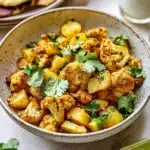
Aloo Gobi Recipe
- Prep Time: 25 minutes
- Cook Time: 25 minutes
- Total Time: 50 minutes
- Yield: 4 servings
- Category: Oven
- Method: Roasting
- Cuisine: Indian
- Diet: Vegetarian
Description
Aloo Gobi is a classic Indian vegetarian dish featuring tender roasted potatoes and cauliflower coated in a fragrant masala sauce. This flavorful and comforting dish is perfect for a cozy family meal or as a side dish for a larger spread.
Ingredients
Potatoes and Cauliflower
- 1 pound (450g) Yukon gold potatoes
- 1 small-medium head of cauliflower (500g of florets)
- 2 1/2 tablespoons neutral-flavored oil (can use olive oil if you want)
- Salt and pepper
Masala
- 2 1/2 tablespoons neutral-flavored oil
- 1 1/2 teaspoons cumin seeds
- 1-inch piece of a cinnamon stick (broken in half as needed)
- 1 medium yellow onion, diced
- 6 garlic cloves, finely chopped
- 1-inch piece ginger, peeled and finely chopped
- 1/2 teaspoon ground turmeric
- 1/4 teaspoon asafoetida AKA hing (optional)
- 1 1/2 teaspoons amchur powder
- 2 teaspoons ground coriander
- 1/2 to 1 teaspoon mild red chile powder
- 1 serrano pepper, slit down the middle
- 2 Roma or plum tomatoes, finely chopped
- 1 1/2 teaspoons kosher salt
- Freshly cracked black pepper
- 1 tablespoon fenugreek leaves (kasuri methi) (optional)
- 1/2 teaspoon garam masala, plus more to taste
- 1 tablespoon vegan butter (optional)
- 1 big handful cilantro leaves and tender stems
- Freshly squeezed lime juice
Instructions
- Roast Potatoes and Cauliflower
Preheat the oven to 425ºF. Scrub and slice the potatoes and cut the cauliflower into florets. Roast both with oil, salt, and pepper until tender.
- Make the Masala
Heat oil and toast cumin seeds and cinnamon. Add onions, garlic, ginger, and spices. Cook until fragrant. Stir in tomatoes, then add roasted veggies. Finish with herbs and lime juice.
Notes
- While the cauliflower and potatoes roast, chop the onion, ginger/garlic, and prep the spices. While the onions cook, chop the tomatoes. This multitasking is factored into the prep and cook time.
- A decent amount of oil is necessary to brown the onions and draw out the most flavor from the aromatics, spices, and tomatoes.
- If using a stainless steel pan, finely chop the ginger and garlic to prevent sticking.
- Asafoetida adds a quintessential Indian flavor; omit if allergic to gluten.
- Adjust spice levels based on preference.
- Fenugreek leaves add flavor; substitute with more garam masala if unavailable.
Nutrition
- Serving Size: 1 serving
- Calories: 320
- Sugar: 8g
- Sodium: 780mg
- Fat: 18g
- Saturated Fat: 2g
- Unsaturated Fat: 14g
- Trans Fat: 0g
- Carbohydrates: 38g
- Fiber: 7g
- Protein: 6g
- Cholesterol: 0mg

